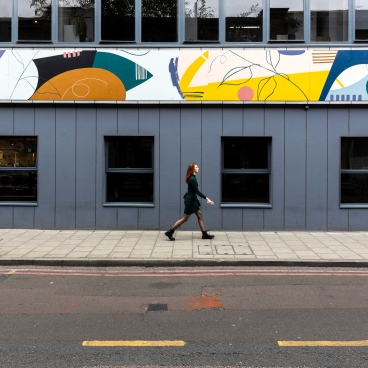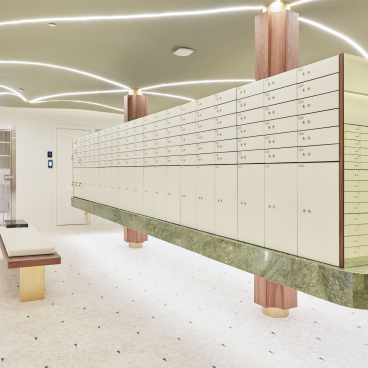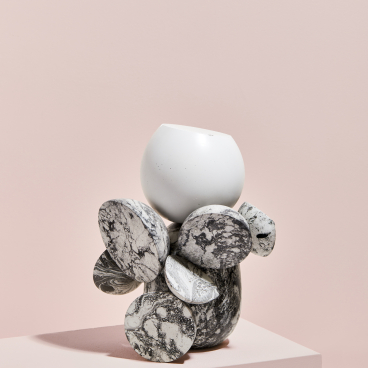Graduate spotlight: Bio-designer and regenerative kelp farmer, Alex Huller.
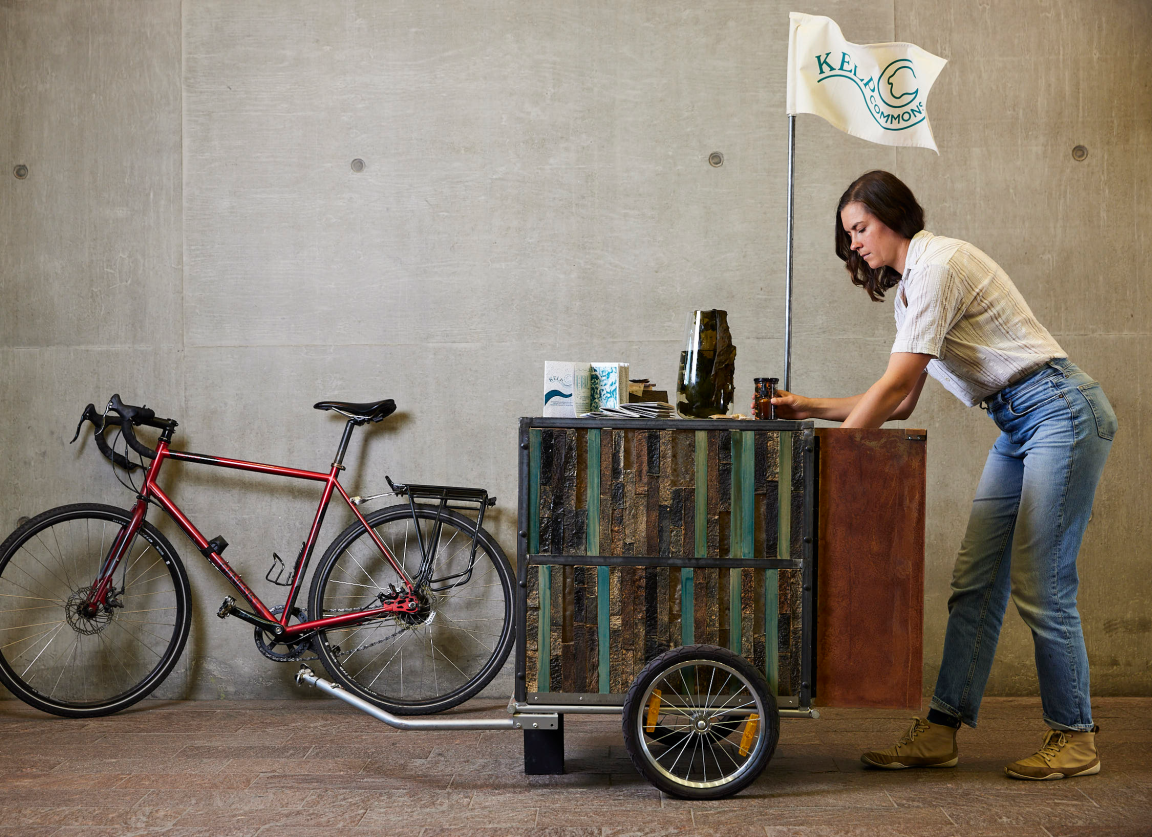
Next up in our graduate showcase is Alex Huller. A fresh-faced alumna of the newly formed Bio-design MA course at Central Saint Martins, Huller applies her background in regenerative agriculture to drive a critical examination of kelp and its social, economic, and environmental benefits.
The core focus of her multidisciplinary practice is to contribute towards a more sustainable and resilient future.
Huller’s exploratory project, Kelp Commons advocates for a cooperative approach to regenerative kelp farming as a catalyst for ecological resilience. Huller outlines the potential of a dynamic system from growing the kelp, to harvest, factoring in material and food source possibilities, as well as support towards sustainability goals.
The outcome of this investigation is a mobile artefact, which aims to engage and educate its audience on the potential of kelp. The ‘cart’ is clad with different algae-based materials, demonstrating different textural and tonal qualities in the application of kelp.
Impressed by Huller’s insightful exploration of kelp and system restructure, we caught up to chat about her project, Kelp Commons.
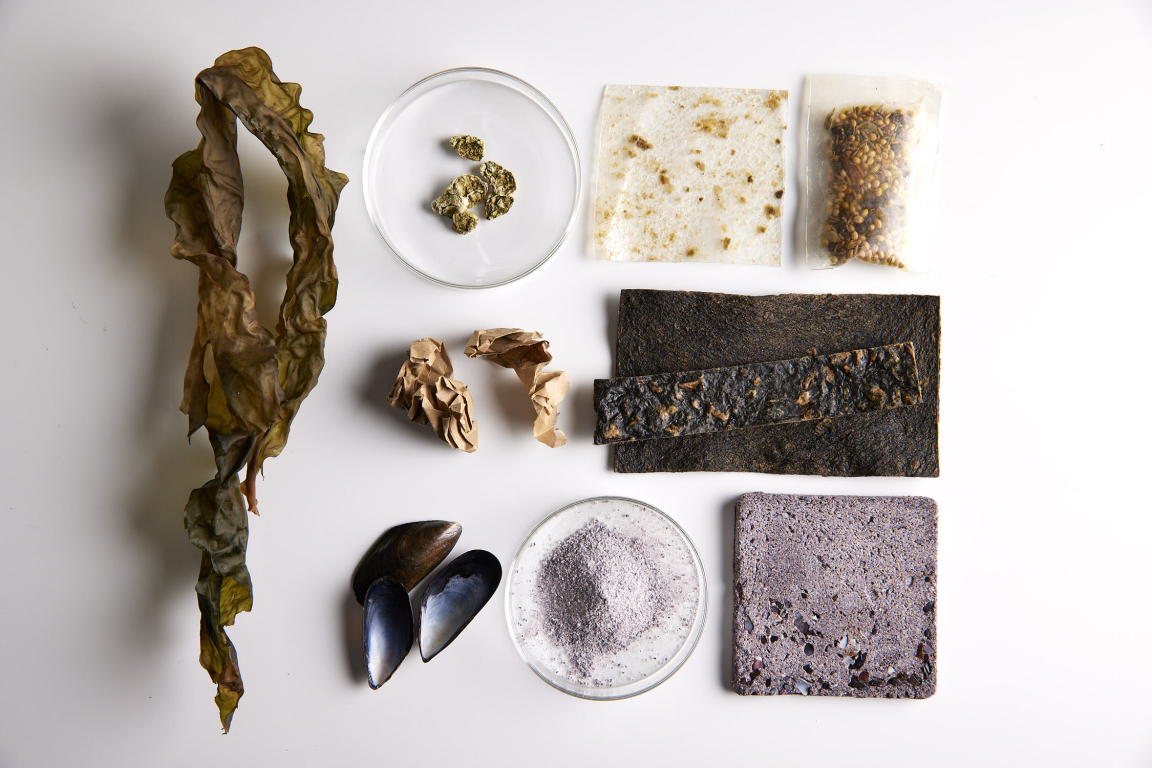
What are the material benefits of kelp?
“Kelp has a variety of material benefits. It is an amazing material just on its own. Strong and leather-like when underwater. The challenge with working directly with this raw material is that it becomes very brittle when dried. Brown seaweeds are great thickeners and stabilisers. The bioplastics I was prototyping utilise these cross-linking capabilities to form a film that can be quite strong, and also biodegradable under certain conditions.
“The kelp in its raw form, if ground and cooked down, releases some of these capabilities without need of lab extraction. The brown cork-like material is bound together with the natural thickeners and stabilisers in the kelp released through heat”.
Is kelp an abundant material in the UK?
“Kelp is incredibly abundant in the UK. Natural kelp forests can be found all around the coasts, developing on rocky seabeds. It is just in recent years that people are starting to cultivate kelp in the UK, which is the most sustainable way of working with this living system as kelp forests are incredibly important ecosystems. Kelp farms are popping up all over, and there has been support from the aquaculture industries as they see innovation with kelp as a sustainable pathway forward”.
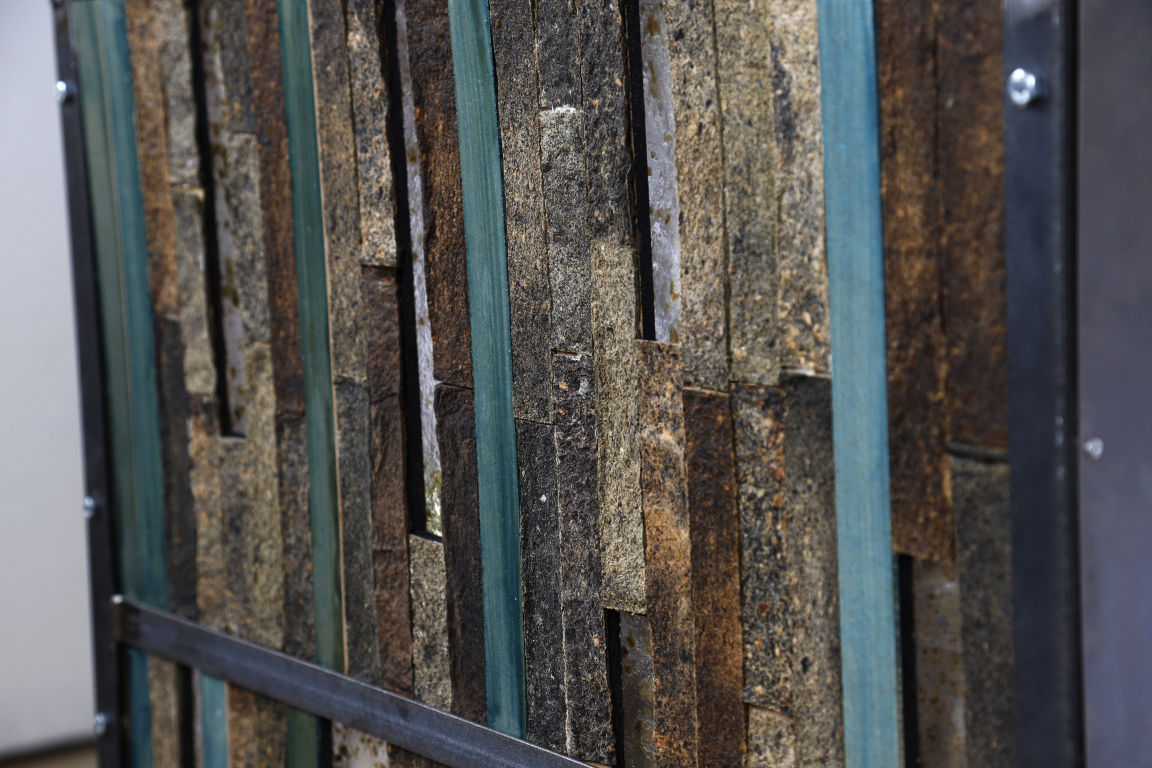
How do you see the material informing the materiality of our day to day?
“Working with biomaterials can be challenging at first, and then really fun when some of your experiments actually work. I see kelp having a strong impact on single use packaging industries as the material quality you can achieve alongside its biodegradability is impressive.
“Kelp has a great feel to it, and strength in its natural components, so I also see more longer lasting materials such as different surface tiles I was prototyping finding their way into the market as well”.
As we look to transition to more local and sustainable material sourcing, I see kelp playing a really powerful and effective role.
Where did the interest in creating a cooperative approach to the value of kelp originate from?
“I come from a small-scale agriculture background, and working with Kelp Crofting, a seaweed farm off of the Isle of Skye in Scotland, was really eye opening to the importance aquaculture plays in rural coastal communities. In Bio-design we do a lot of systems thinking, and studying of natural ecosystems. Nature can’t exist without cooperation, and healthy ecosystems have complex yet functioning relationships that value integration, constant nutrient cycling and feedback loops. In society, we unfortunately have to deal with many malfunctioning hierarchies.
“My design process includes much of this ecosystems approach to structuring our communities and industries. Presenting a cooperative value chain was always a vital part of my work”.
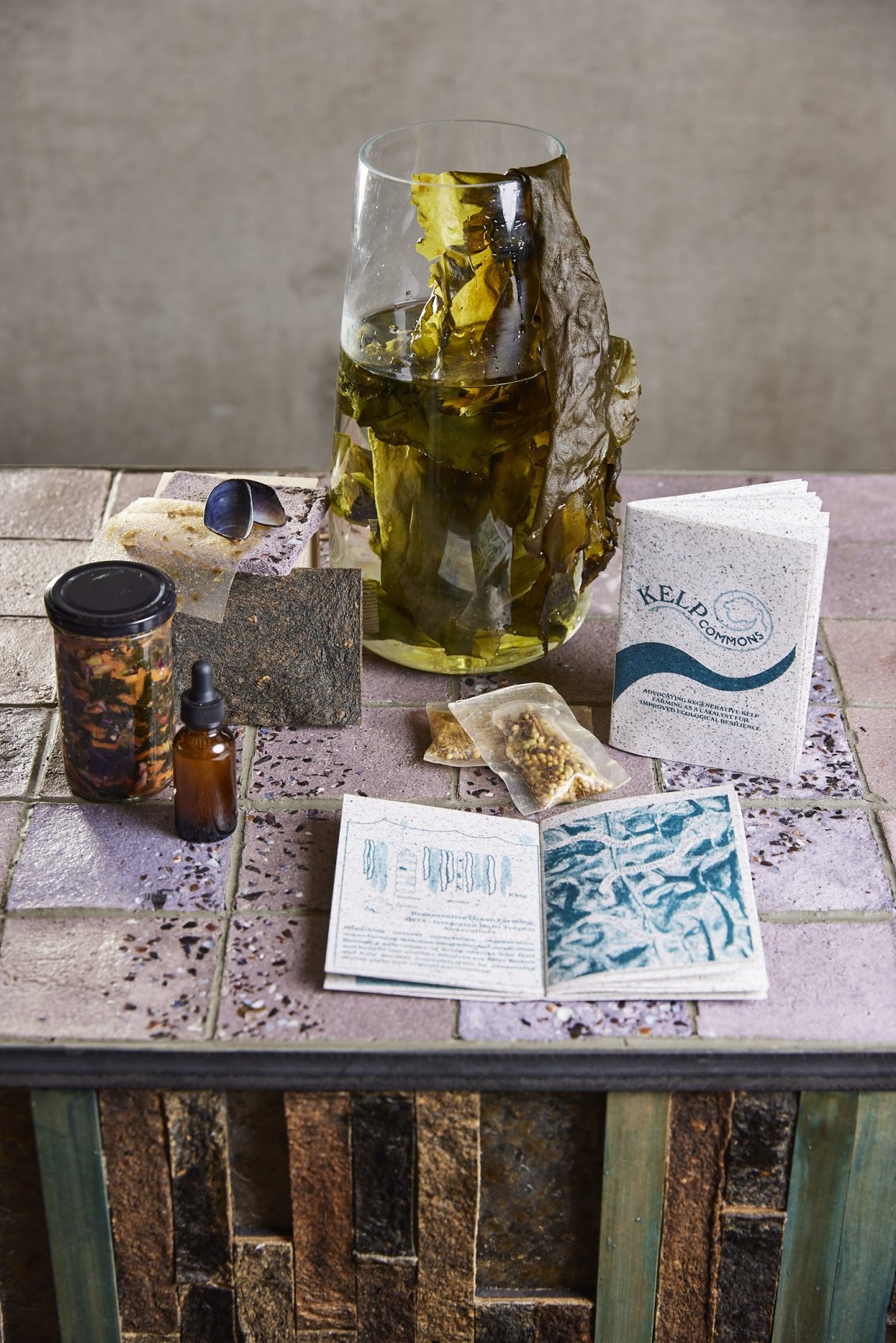
Can you please explain how kelp can be used as a catalyst for ecological resilience?
“Kelp is a hidden ecosystem engineer, and a real superpower in the ocean that plays an important role in habitat formation and food web dynamics. As well as taking carbon out of the atmosphere, seaweeds also help to rehabilitate their immediate environment by lowering the acidity levels around them. By helping raise PH levels, kelp can improve growing conditions for shellfish whose shells’ become brittle in more acidic environments.
“Kelp forests function like the rainforests of the sea, integral to ecosystem balance. So, how we cultivate kelp moving forward is really important, leaving sections of farms to continue growing and keeping a constant cycle mimicking the natural kelp forest environments. The afterlife of kelp can cascade into a variety of beneficial industries from food and feed, to materials, cosmetics, fertilisers, fuel and more”.
Using kelp in these industries displaces carbon emissions from current, unsustainable materials and practices.
Can you please tell us how you have made kelp into surface tiles?
“I’ve used kelp in a couple of different tile applications. There is a kelp and paper waste cork-like material which has a great feel to it. My favourite part about this material is the simplicity of it. Blending and cooking down releases some of its natural thickening and stabilising properties. Together with paper waste you can create this thick paste that when dried, is a really strong material. This material has a lot of potential in different thicknesses and moulds.
“The tile used on top of the cart is made of mussel shells and sodium alginate - extracted from kelp. Mussels and kelp grow together in the ocean, and are grown in polyculture ocean farming methods. I wanted to bring attention to this relationship, and it turns out they work really well in a material together too. It is a ceramic like tile, the sodium alginate being the glue that holds it all together. I was pleasantly surprised to see how bright the tiles came out, the colour of the mussels really pops.”
To discover more about Kelp Commons click here. And follow @wellalbe on Instagram.


